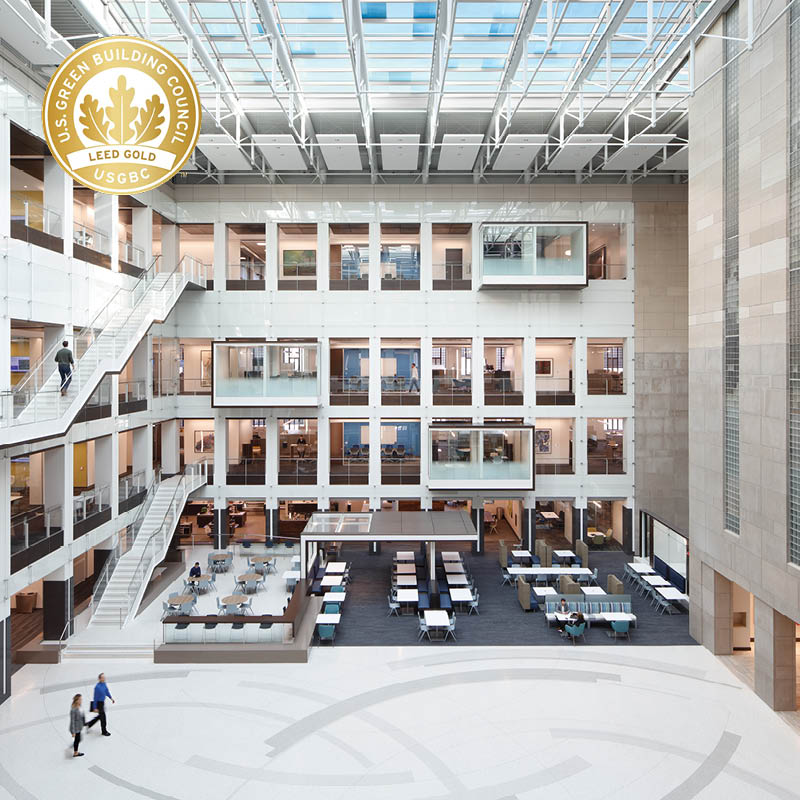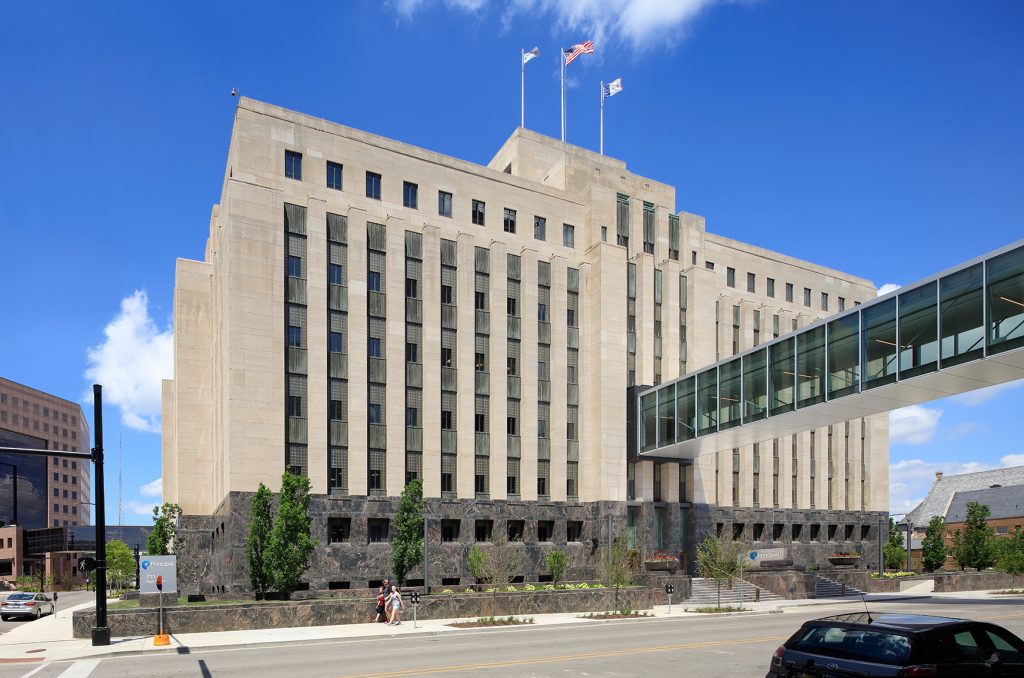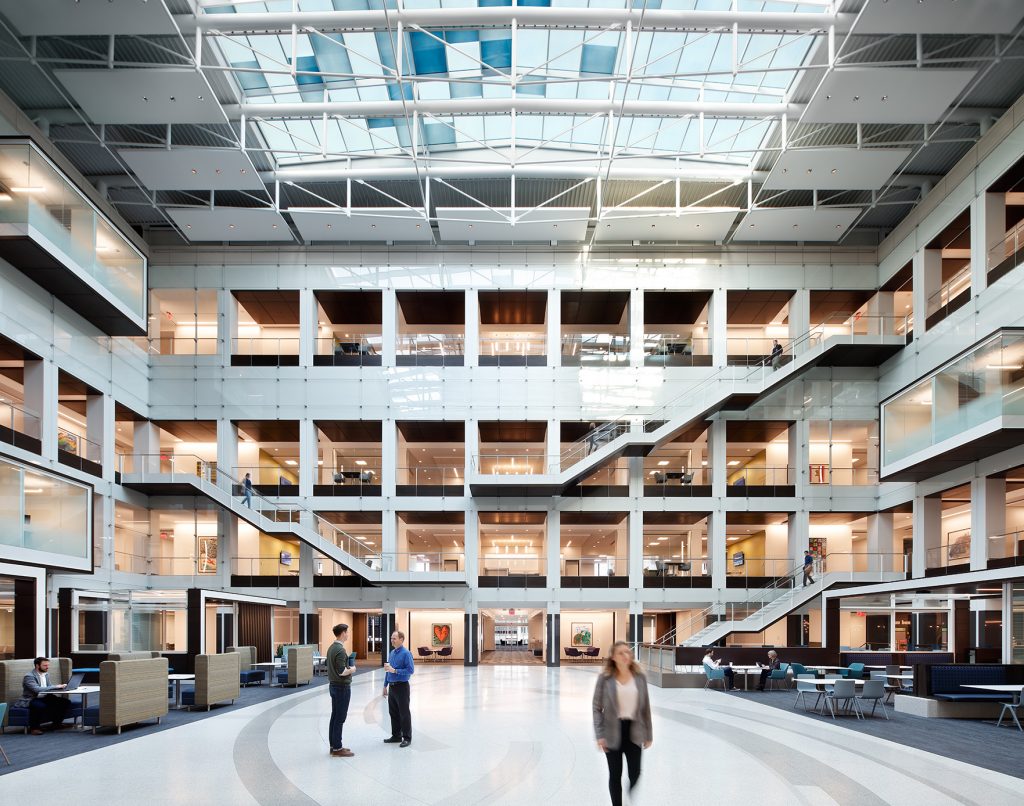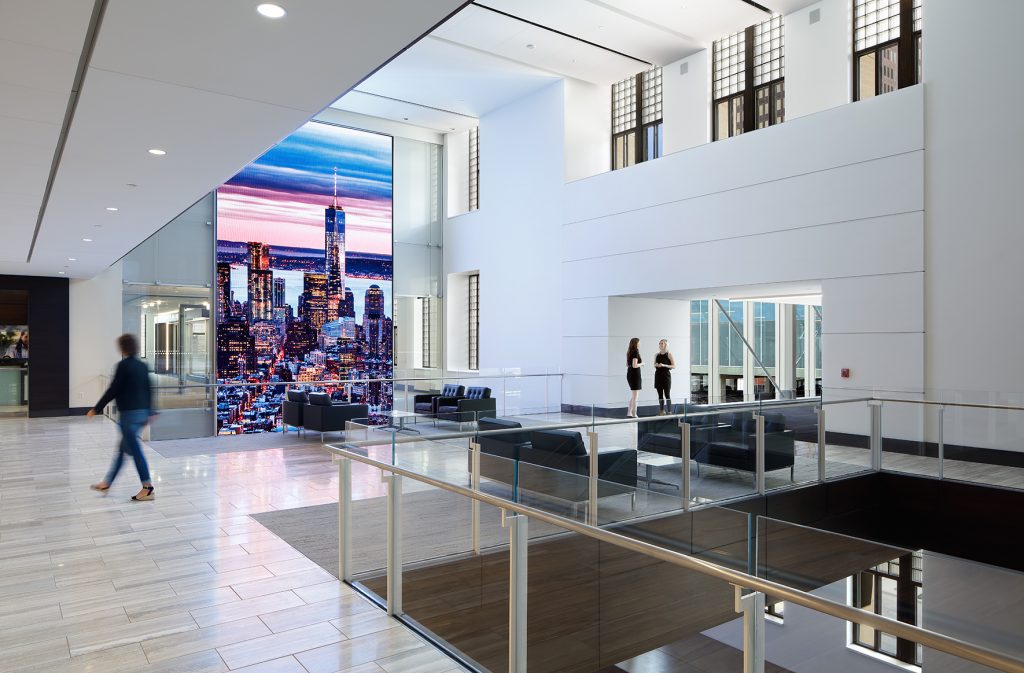711 High Street renovation achieves LEED Gold certification

The multi-year renovation and re-imagination of Principal’s 711 High Street has achieved LEED Gold certification.
711 is a building of historic architectural significance, described by Architectural Record as the “Building of the Decade” in 1940. It was meticulously restored in areas to preserve and enhance those character defining elements, while being modernized and updated for corporate functions needed today and in the future.
Guided by sustainable design principles and with LEED Gold certification in mind, the design maintained more than 95% of the existing building envelope and primary structural components. The annual site energy consumption was reduced by approximately 36% over a baseline case using ASHRAE 90.1 2007. The Predicted Energy Use Intensity (pEUI) is nearly 62% below the National Average Site EUI for this project type.
Prior to the renovation, two single-story entrances received visitors and employees. The lobby spaces were dark, outdated, and uninspiring for a Fortune 500 company. A common four-story volume now welcomes visitors and employees from both street level and new third floor skywalk entrances, highlighted by a 60-foot high by 16-foot wide LED screen that visually connects the spaces. These open spaces onsite equal to over 40% of the total site area, prioritizing pedestrian use and access. Another prominent feature to the lobby space renovation, the atrium stairs, serve as design for active occupants – promoting activity through visible primary stairs with daylighting, encouraging movement and connections between floors. In order to manage the flood of natural daylight coming from the atrium it was a sustainable effort to install electrochromatic glazing (SageGlass) above the atrium to control light/heat, improving occupant thermal comfort while maintaining a high level of daylight.
Other significant sustainable efforts included performing asbestos abatement (the largest in Iowa, to date), reducing indoor potable water use by over 35% through efficient fixtures, and installing a significant portion of reused materials, recycled materials, and regional materials.
There are four levels of LEED certification. The number of points a project earns determines the level of LEED certification that the project will receive. There are specific prerequisites projects must satisfy and a variety of credits projects can pursue to earn points. The number of points the project earns determines its level of LEED certification. Gold, the second highest certification, requires 60 to 79 points.
With more than two dozen LEED certified buildings, OPN also is proud to be among the 525 firms who have pledged to design 100 percent carbon-neutral projects by 2030. In 2018, the firm’s average energy savings across its entire portfolio of work is 60% above the 2030 baseline, outpacing the industry average of 44%.



